Pyhäjärvi 作者: 来源: 发布时间:2021-10-16
一、所属省或是州,具体位置,人口,面积
Pyhäjärvi (often until 1968 in official contexts Pyhäjärvi Ol as a difference from other municipalities of the same name, in 1993–1995 Pyhäsalmi) is a Finnish city located in the southern part of Northern Ostrobothnia. The city is home to 5,090 people and covers an area of 1,459.46 km², of which 148.66 km² are water bodies. The population density is 3.88 inhabitants / km². Pyhäjärvi's neighboring municipalities are Haapajärvi, Kiuruvesi, Kärsämäki, Pielavesi, Pihtipudas and Pyhäntä. At the beginning of 2017, Pyhäjärvi became the second smallest municipality in Finland using the name of the city after Kaskinen after Juankoski joined Kuopio.
Until 1968, the municipality of Pyhäjärvi was officially named Pyhäjärvi Ol, in 1969–1992 Pyhäjärvi, in 1993–1995 Pyhäsalmi and again from 1996 Pyhäjärvi. Other municipalities called Pyhäjärvi in Finland have been Pyhäjärvi Ul, which now belongs to Karkkila, and Pyhäjärvi Vpl, which was located in the ceded Karelia. Lake Pyhäjärvi became a city in 1993.
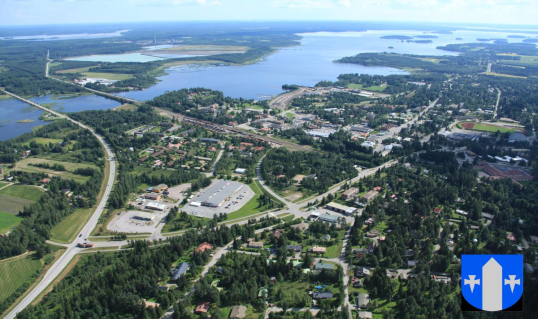
https://www.pyhajarvi.fi/
二、自然地理
1.地理条件
The natural landscapes of Pyhäjärvi are varied. The eastern and southern parts of the municipality are typical of hilly and ridge terrain in Lake Finland, while the northern parts are the salinity of Suomenselä and the western parts are Ostrobothnia. Especially around Lake Pyhäjärvi, the landscapes are more varied than in Central Ostrobothnia in general. The landscape is characterized by extensive forests and swamps enlivened by water bodies, as well as small field openings.
On the west side of Lake Pyhäjärvi, the terrain is flat. In contrast, large areas on the south and east sides of Lake Pyhäjärvi rise above the 200-meter level. The eastern part of the municipality has been named Mäkikylä based on its surface shape, the highest elevation of which is Vuoutomäki Loutemäki. The highest hill in the municipality is Havukkamäki. Leppämäki and Pitäjänmäki Kotamäki are almost as high hills.
Pyhäjärvi is a watershed region, the municipality is crossed by the Suomenselä watershed in the southwest-northeast direction. In most parts of the municipality, water flows through the Pyhäjoki River into the Bothnian Bay. From the eastern parts of the municipality, the waters flow into the Saimaa watershed, from the south to Päijänne and from the west into the Kalajoki watershed. The municipality's central lake is the large Pyhäjärvi, which meanders along its shoreline, into which several small rivers and streams flow. The lake is divided into five basins: Piiponselkä, Kesonselkä, Isoonselkä, Kirkkoselkä and Junttiselkä. The railway and road cross the Pyhäsalmi agglomeration of the lakeby. The waters of Lake Pyhäjärvi flow from the northern end of Junttiselä through a regulatory dam to the Pyhäjoki River. Vesikoski and Kalliokoski have been harnessed from the Pyhäjoki rapids. After Pyhäjärvenkatu largest lakes are Komujärvi, Parkkimanjärvi and Haapajärven and partially located in the Kuonanjärvi. Nurmesjärvi is an internationally significant bird water on the border of Pyhäjärvi and Kärsämäki. Lohvanjärvi and Särkijärvi are also significant bird waters.
Swamps cover half of Pyhäjärvi's land area. Most calls are in the northern and northwestern parts of the municipality. Significant natural bogs are in the vicinity of Kärsämäjärvi and Tervaneva and Iso Karsikkoneva near Pitkäkangas.
2.交通情况
From Lake Pyhäjärvi in the city, the river Pyhäjoki River flows out towards the Gulf of Bothnia and it has been a route since time immemorial. The city is Highway 4, which is also the E75, and crosses the connection route 7700 Highway 27 westbound also passes the city area. The railway between Idensalmi and Ylivieska runs through Pyhäjärvi (Pyhäsalmi railway station) and provides a connection to the main network.
三、经济发展和规模
Pyhäjärvi has a tax rate of 21.75% in 2020, which is the 59th largest tax rate in Finland.
The economic development of the city of Pyhäjärvi has been challenging in recent years. The year 2015 In accordance with the state contribution decisions, the state contributions decreased by approximately EUR 2.5 million in 2015. For the increase in operating expenses, e.g. with regard to social and health services, and Pyhäsalmi mine underground mining must be sought alternative courses of action.
The end of 2019 will have a significant impact on the tax revenues of the city of Pyhäjärvi. Pyhäjärvi and the region suffer from a shortage of about 500 hp, wage income in the locality 28 M € deficit and about 7 M € tax revenue. The city of Pyhäjärvi is prepared for a structural change in the city group's economy balancing program preparation through and by investing locality vitality years of restructuring.
Total revenue for 2019 (corresponding figures for 2018 shown in brackets) was EUR 47.1 million (EUR 48.7 million), of which the largest share consisted of tax revenue 41.9% (42.0%). Government contributions accounted for 35.2% (33.2%) of revenues and operating revenues for 8.4% (10.4%).
Total expenses were EUR 47.4 million (EUR 47.0 million), of which 89.6% (90.8%) consisted of operating expenses. Investment operating expenses accounted for 5.5% (4.5%) of total expenses.
City of Pyhäjärvi. (2019). 2019 Annual Financial Evaluation. https://www.pyhajarvi.fi/fi/talous
四、产业特点/重点项目
In Pyhäjärvi is Pyhäsalmi mine, opened by Outokumpu Oyj in 1962 and owned since 2001 by the Canadian mining company, Inmet Mining Co. The mine is Europe's deepest with 1,410 meters and has 210 employees. It mined copper, zinc and by-product pyrite. The ore body is estimated to be sufficient for mining by 2019. The mine also has what is said to be the world's deepest sauna.
The City is actively looking for a company to come and work on a mine in the municipality. The Pyhäsalmi Mine, located in the town of Pyhäjärvi, Finland, is one of the deepest known mines in Europe reaching 1,445 metres underground. As mining will end, a globally unique multidisciplinary operating environment, Callio, will emerge. The mine and the surrounding brownfield area offer a diverse range of opportunities for success for new and innovative projects and established operators seeking new horizons alike.
五、风景名胜,景点( attractions)
1. Pyhäjärvi Church
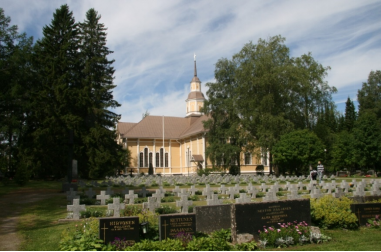
Pyhäjärvi Church is the Fifth Church of Pyhäjärvi Parish. The third church in Pyhäjärvi, a simple Gustavian cruciform church designed by master builder Sigfrid Silvasti, completed in 1790, was destroyed in a fire ignited by lightning on June 21, 1895. Construction of a new church began on the same site. This wooden cruciform church, designed by Sebastian Gripenberg, Director General of the General Government of Public Buildings, was only nearing completion when it burned down in the fall of 1896. The present church was built according to the same drawings and was completed in 1897. The altarpiece of Pyhäjärvi Church was painted by Ilmari Wirkkala in 1945. The subject of the painting is Jesus on the Cross, at the foot of which people from different nations have gathered. The old large wooden cross that used to be on the altar has been left behind the board.
https://fi.wikipedia.org/wiki/Pyh%C3%A4j%C3%A4rven_kirkko
2. Pyhäjärvi Homeland Museum
n Pyhäjärvi's Kirkonkylä, next to the old cemetery, stands a crown grain warehouse completed in 1866, which serves as a local history museum maintained by the Pyhäjärvi Society.
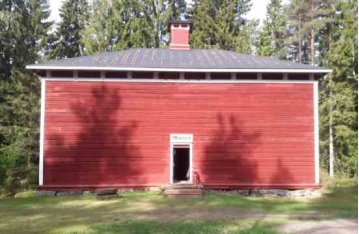
The museum, painted with red soil, is a 13-meter-high log building with white end and eaves boards and a black roof. In bad years, farmers could borrow seeds and edible grain from the crown grain warehouse. Repayment was made in the fall as grain. The men climbed briskly with a 20-pound sack on the shoulder of the stairs to the upper floor of the magazine, where grain was poured through a grate into the laurels, of which there are four in the building. For each lair, a small hatch in the bulkhead and stairs down to the lair were once built for a crown inspector who went to count the quantities of grain. The double walls of the building and the brick-reinforced floor prevented grain thieves. When the building was put into museum use, Doorways were punctured in every six-foot-high grain barn.
https://www.pyhajarvi.fi/fi/kotiseutumuseo-makasiini
3. VITIKKAMÄKI NATURE TRAIL
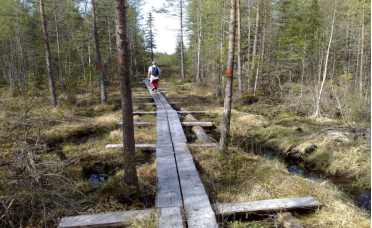
The starting point of the Vitikkamäki nature trail, located in the Suomenselä watershed area, is located about seven kilometers east of Highway 4 Suezintie. The landscape of the trail is dominated by a spectacularly bouldered bedrock, beautiful cloth forests and marshes located at the lower parts of the terrain. The terrain varies along the route, and from the highest point of the route there is a view of the largest body of water in the area, Lake Pyhäjärvi. The environment in the area is undisturbed, thus offering good conditions for a typical Finnish plant and animal species. The path is not yet complete, as picture and text boards will be completed for the path later.
http://www2.pyhajarvi.fi/tiedostot/matkailu/vitikkamaen_luontopolku
六、历史文化
1.历史
The first people arrived at the tops of Pyhäjoki and on the shores of Lake Pyhäjärvi around 5000 BC. The most significant Stone Age residence has been found in Rajahoika on the shores of Lake Kotajärvi. Ancient Päijänne once extended to Kotajärvi and descended to the Gulf of Bothnia along the Hinkuanjoki River around Lake Haapajärvi. Rajahoika's rich artefacts belong to the culture of Suomusjärvi. Other pre-ceramic residences are Hietakylä Ketola and Kuivaniemi. Artifacts of comb ceramic culture have been found in Likolahti and Kuivaniemi. In addition, from Sammallahtian Iron Age ax has been found.
According to the land registers, there were already six houses in Pyhäjärvi in 1553. From the 17th century onwards, settlement progressed rapidly. In 1749 there were 740 inhabitants, in 1805 3 670 and in 1920 6 424. The Pyhäjärvi region belonged to the parish of Salo until 1563, when the Pyhäjoki Valley was separated into the Pyhäjoki parish. Pyhäjärvi became the Pyhäjoki Chapel Parish in 1650. When Kärsämäki was separated in 1856 as its own parish, Pyhäjärvi was annexed to it. However, the Pyhäjärvi parish became independent as early as 1861. The first church in Pyhäjärvi was a modest wooden church built in 1647 near the Rauhalahti house. The new church was completed in 1739 in Väisälänmäki. The church burned down by lightning in 1895 and the following year the nearly finished church also burned down. The church, designed by Sebastian Grinpenberg, was completed in 1897.
Pyhäjärvi rose early on to become a prominent agricultural farmer whose strong livestock farming was based on natural pastures. In the 19th century, several lakes were drained to obtain new meadows. To process the milk, village dairies were established, which in 1894 became a dairy company called the National Dairy. Rautaruukki was founded in Vesikoski, Pyhäjärvi, in 1843 to refine lake ore. Ruukki was sold in 1856 to Henrik Sjöberg, who renewed the equipment and increased the production of pig iron. Ruukki's operations went bankrupt in 1873. A mill and a brewery have operated in Vesikoski.
As a result of the territorial handover, evacuees from Soanlahti were settled in Pyhäjärvi in 1944. As a result, an Orthodox prayer room was built in Pyhäsalmi with Finnish state funds, and the Pyhäjärvi Orthodox were assigned to the Kiuruvesi Orthodox Parish on January 1, 1950.
The population of Lake Pyhäjärvi increased steadily from the beginning of the 20th century until 1962, when there were 9,823 inhabitants. In 1985, the population was 7,990. The importance of agriculture and forestry as an employer clearly decreased in the 1960s and 1970s.
Previously, the municipality was called Pyhäjärvi Ol (Pyhäjärvi in Oulu County) to distinguish it from the municipalities of the same name in the counties of Uusimaa and Vyborg (Pyhäjärvi Ul and Pyhäjärvi Vpl). However, Pyhäjärvi Vpl remained in the area handed over after the war, and later in 1969 Pyhäjärvi Ul was annexed to Karkkila. When Lake Pyhäjärvi in the province of Oulu thus remained the only municipality in Finland with this name, the suffix Ol used in connection with the name was obsolete.
Pyhäjärvi became a city in 1993. It changed its name to Pyhäsalmi on 1 January 1993 when it was declared a city, but returned to its previous name as of 1 January 1996.
2. 文化体育
Full Moon Dances
Full Moon Dance - festival is a Finnish contemporary dance event. The festival is held annually at the turn of July - August in Pyhäjärvi. The program includes both domestic premieres and Finnish and foreign successful works in contemporary dance.
The Full Moon Dances Festival was first held in 1992. The festival originated on the dance field from a long-standing need to to create new performances especially for young, newly graduated choreographers and dancers. Contemporary dance, which exploded in the 90s, needed its own festival where the opinions of artists are taken into account and developed under the terms of dance art. It was also felt necessary to create a forum that would allow for different experiments as well as create opportunities for discussion and feedback also between the audience and the performers. The festival was born in the city of Pyhäjärvi, which had been a lively dancer for more than twenty years. Since 1998, the festival has been accepted as a member of Finland Festivals. In 1999, Finland Festivals named Pyhäjärvi Full Moon Dances the Festival of the Year.
https://fi.wikipedia.org/wiki/T%C3%A4ydenkuun_Tanssit
七、其他信息
Underground Rescue Project
The aim of the Underground Rescue project is to develop an occupational safety training, training, development and innovation environment that utilizes the unique underground infrastructure of the Pyhäsalmi mine. The target group is e.g. mining companies and their subcontractors, construction industry, energy industry, nuclear power plant rescue units, research institutes and regional fire & rescue institutes. The project has received a positive financing decision on 25 June 2019 and the main implementer of the project is the City of Pyhäjärvi.
As the project progresses, co-operation with companies will be intensified, creating a basis for business opportunities after the end of the project.
Project implementation period: 01.01.2019 - 31.12.2021
Total project budget: 739 228 €
Project partners: J&T Technology Oy, Posiva Oy, Agnico Eagle Oy, Anglo American Exploration - Finland AA Sakatti Mining Oy, Sotkamo Silver AB, M-Solutions Oy, Pyhäsalmi Mine Oy, Dräger Finland Oy, Heat-It Oy, City of Pyhäjärvi, Finnish Fire Officers' Association SPPL, Centria University of Applied Sciences Oy, University of Oulu Kerttu Saalasti Institute and Nihak Ry.
https://www.pyhajarvi.fi/fi/projektit-ja-hankkeet
八、联系方式
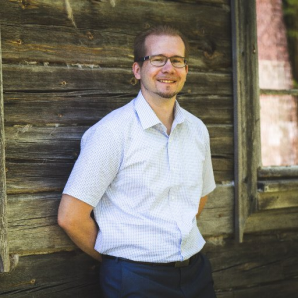
Mayor: Henrik Kiviniemi
Telephone: Tel. (08) 769 7111
Email: pyhajarvi@pyhajarvi.fi
https://www.pyhajarvi.fi/
